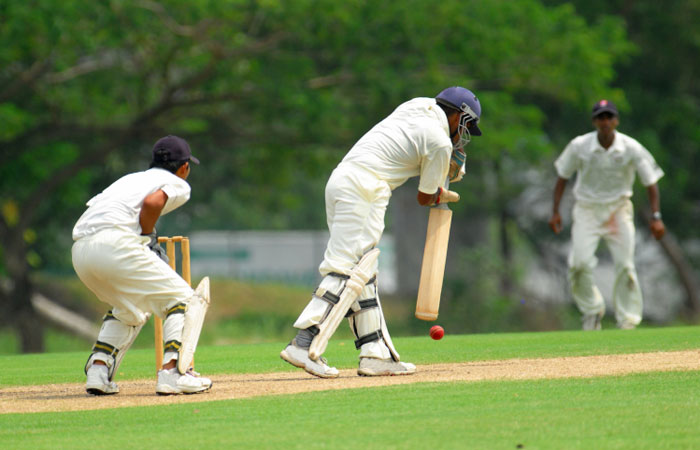Editor-In-Chief
Ever wonder how cricket is played? When I think of cricket, I think of kickball and baseball concurrently, played in backyards by cartoon characters. However, in reality, cricket is a popular worldwide sport played by real adults in real championships.
Historically it can be traced back to 16th century Tudor England. In the earliest reference to the game in 1598 it was called creckett. This archaic form, though, underwent some major changes in the 18th century and became the national sport of England, a title which although technically remains today is overtaken in popularity by soccer. That being said, just because soccer is more popular doesn’t mean it’s a waste of time to learn about this awesome, historical sport! Or at least I’m really hoping so.
The game is similar to baseball inasmuch as American football is similar to soccer; they both revolve around the use of bats and bases, but the rules and overall gameplay are very distinctive.
Cricket is a two-team sport, where each team has 11 players. The objectives of the game are for the batting team to score runs and for the fielding team to restrict scoring and dismiss the batsmen. The playing field is not standard, but must be roughly elliptical and have a patch of carefully mowed grass in a rectangle in the center. This rectangle is called the pitch. There are two wickets, also called stumps, which are wooden structures with three columns too close together for a ball to pass through, at each end of the field.
Players use a bat with a long and flat area on one side, usually made out of willow, that is always curved on the other side. The balls used are not unlike baseballs in size and hardness, however the leather used is thicker and the stitching is more raised.
The play is divided into innings. An innings ends when either 10 batsmen are out or after a pre-determined length of time or requesite amount of runs is hit. Also important to note is that, unlike baseball, the singular form of innings is also called an innings, those crazy wickets. Depending on the type of match being played, each team gets either one or two innings apiece.
Gameplay begins with a coin toss to decide which team bats first; pretty standard. The captain of the winning team decides if his team will bat or field first. All 11 players on the fielding team go out to the field, and one batter goes to each wicket. One fielder is designated the “bowler” and goes to stand behind one of the wickets, away from the pitch. He, along with the wicket-keeper, who squats behind the opposite wicket, are the only two fieldsmen to wear any protective gear.
Each batsman stands near a wicket, on opposite ends of the field, on a painted or chalked line called a popping crease. The batsman farthest from the bowler is called the striker, and the other batsman is called the non-striker. The bowler on the fielding team will roll the ball, trying to hit the wicket behind the striker on the other end of the field. If he does so, or if the fielding team catches a ball hit by the batsman before it hits the ground, the batsman is dismissed and a new batsman will take his place.
If the batsman defends the wicket properly, then he and the non-striker have the opportunity to score runs by running from one end of the pitch to the other, touching the ground behind the crease before the opposing team fields the ball. Both runners must succeed in this for a run to be registered.
Apparently batsmen can attempt to go for extra runs by going back and forth across the field, touching the area behind the popping creases. Five is pretty much the highest amount of runs one can get during a single play, but this is rare.
There are two strips on the wickets called bails, and the fieldsmen attempt to hit these off the wickets. There are also 10 different ways to get a batsman out, all of which are rather confusing and contain a lot of terminology you might need a degree in British English to understand. I think the entire sport can about be summed up this way.
Five more common ways to get the batsmen out include bowling six times without the striker hitting the ball (similar to the three strikes rule), catching the ball in the air after the striker has hit it, breaking the wicket behind the bowler by either a direct hit or reflecting the ball off the striker, the striker hitting the wicket and breaking it, or interference by a batsman.
This is the barest explanation of cricket that can be mustered, but the game has so many odd rules that really this might be the best I can do. F&M, thank goodness, does not have a cricket team, so it is not expressly useful for students to learn the detailed ins and outs of the game.
Questions? Email Lauren at lbejzak@fandm.edu.
